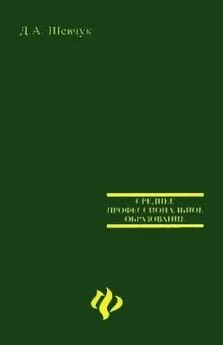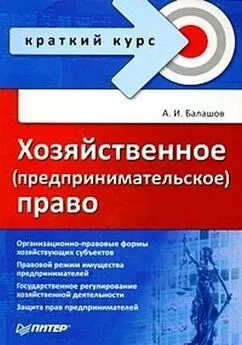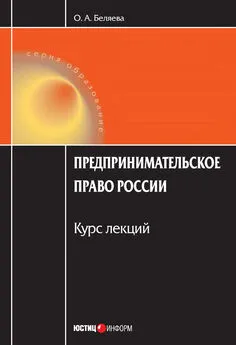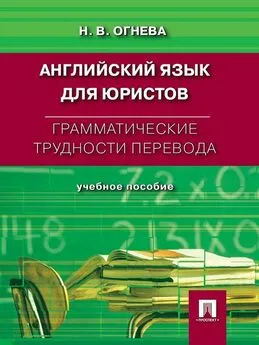Станислав Коростелев - Английский язык для юристов. Предпринимательское право
- Название:Английский язык для юристов. Предпринимательское право
- Автор:
- Жанр:
- Издательство:046ebc0b-b024-102a-94d5-07de47c81719
- Год:2006
- Город:СПб
- ISBN:5-469-01382-0
- Рейтинг:
- Избранное:Добавить в избранное
-
Отзывы:
-
Ваша оценка:
Станислав Коростелев - Английский язык для юристов. Предпринимательское право краткое содержание
Настоящее учебное пособие предназначено для овладения лексикой в области предпринимательского и коммерческого права студентами лингвистических вузов и студентами гражданско-правовой специализации юридических вузов.
Книга призвана дать преподавателям и студентам специальный языковой и профессиональный материал, ориентированный на повышение качества профессиональной подготовки в области правовой лингвистики и международного бизнеса.
Английский язык для юристов. Предпринимательское право - читать онлайн бесплатно ознакомительный отрывок
Интервал:
Закладка:
The primary purpose of tort law is to compensate the innocent party by making up for any loss suffered by that victim. Another objective is to protect potential victims by deterring future tortious behavior. Criminal law involves a public wrong, that is, a wrong that affects the entire society. When a crime is committed, government authorities begin legal actions designed to remove the offender from society. It is possible, however, for a single act to be both a tort and a crime.
Businesspeople must be especially aware of tort law because of the doctrine of respondeat superior (let the master respond). That doctrine may impose legal liability on employers and make them pay for the torts committed by their employees within the scope of the employer's business.
No legal liability can be imposed against an individual unless two elements are present: the first element is duty, which is an obligation placed on individuals because of the law; the second element is a violation of that duty. A duty can be violated intentionally, through negligence, or under the theory of strict liability.
Legal duties arise corresponding to each right within each member of our society.
Intentional violations of duty include a variety of intentional torts, all of which have their own individual elements. The principal intentional torts are assault, battery, false imprisonment, defamation, invasion of privacy, misuse of legal procedure, infliction of emotional distress, nuisance, and interference with a contract.
People and property are sometimes injured even when no one intends that the injury occur. Such an occurrence is usually labeled «an accident.» Justice demands that the injured party be compensated. That part of tort law that is concerned with the compensation of accident victims is called negligence.
Under what circumstances can the actions of an alleged tortfeasor be labeled negligent so that the tortfeasor will be held liable? Four elements must be present to establish negligence: (1) legal duty, (2) breach of duty through a failure to meet the appropriate standard of care, (3) proximate cause, and (4) actual injury.
A breach of duty owed to the victim occurs if the tortfeasor has not met the appropriate standard of care under the circumstances. To determine if the alleged tortfeasor has met the standard of care, the court uses the reasonable person test. This test compares the actions of the tortfeasor with those of a reasonable person in a similar situation. The reasonable person test is objective.
Determining this test may require the use of expert witnesses to testify as to the reasonable professional's conduct under the circumstances.
In order for the tortfeasor to be held liable, the unreasonable conduct must be the proximate cause of the victim's injuries. Proximate cause (sometimes referred to as legal cause) is the connection between the unreasonable conduct and the resulting harm.
The injured party in a lawsuit for negligence must show that actual harm was suffered. In most cases, the harm suffered is a physical injury or in a form of property damage, and is, therefore, visible. Harm suffered due to fright or humiliation is difficult to demonstrate.
Several defenses can be used by the defendant in a negligence case. These defenses include contributory negligence, comparative negligence, and assumption of the risk.
The defense of contributory negligence involves the failure of the injured party to be careful enough to ensure personal safety. Contributory negligence completely prevents recovery by the injured party. The injured party's defense to a charge of contributory negligence is called last clear chance. Under this doctrine, a tortfeasor may be held liable if the injured party can show that the tortfeasor had the last chance to avoid injury.
The doctrine of comparative negligence requires courts to weigh the relative degree of wrongdoing in awarding damages, and to assign damages according to the degree of fault of each party.
Another defense to negligence is assumption of the risk, which involves the voluntary exposure of the victim to a known risk.
Under the doctrine of strict liability or absolute liability, the court will hold a tortfeasor liable for injuries to a victim even though the tortfeasor did not intend the harm and was not, in any way, negligent. Strict liability is generally applied when the harm results from an ultrahazardous or very dangerous activity.
Product liability is a legal theory that imposes liability on the manufacturer and seller of a product produced and sold in a defective condition (unreasonably dangerous to the user, to the consumer, or to property). Anyone who produces or sells a product in a defective condition is subject to liability for the physical or emotional injury to the ultimate consumer and for any physical harm to the user's property.
When a wrongdoer has injured another person by committing a tort, the victim can usually be compensated with monetary damages. Damages can include compensation for the repair or replacement of involved property, or for lost wages, medical bills, and any pain and suffering that the victim was forced to endure. If the tortfeasor's acts are notoriously willful and malicious, a court may impose punitive damages (exemplary damages), which are damages above and beyond those needed to compensate the injured party. Punitive damages are designed to punish the tortfeasor so that similar malicious actions are avoided by others.
If a tort involves a continuing problem the injured party may ask the court for an injunction. An injunction is a court order preventing someone from performing a particular act. If the company failed to satisfy an order, it would be in contempt of court. Contempt of court is a deliberate violation of the order of a judge that can result in a fine or in incarceration for the wrongdoer.
Exercise 1. Comprehension questions: 1. What are the kinds of violation of a duty?
2. What is done to determine if the alleged tortfeasor has met the standard of care?
3. What are the forms of the actual harm?
4. When do the courts deny damages in actions for negligence?
5. When is the strict liability applied?
6. What are the punitive damages designed for?
7. Explain what an injunction is.
Exercise 2. Find in the text English equivalents to the following:
Относительная небрежность; совместная вина; небрежность, предполагающая возмещение доли ответственности; предел возмещения; разглашение правдивых сведений позорящих другое лицо; юридически порочные условия; судебный запрет; вмешательство в контракт; нарушение личной жизни; правовая обязанность; клевета письменно или через печать; небрежность; источник вреда; непосредственная причина; убытки, присуждаемые в порядке наказания; устная клевета; объективная ответственность.
Exercise 3. Consult recommended dictionaries and give words or phrases to the following definitions:
Обязательства из причинения вреда; моральный вред; меры ответственности; вред причиненный источником повышенной опасности; вред причиненный актами власти; вред причиненный несовершеннолетними лицами; вред причиненный недееспособными лицами; вред причиненный жизни и здоровью гражданина; право регресса; способы и размеры компенсации вреда.
Exercise 4. Be ready to talk on one of the following topics:
1. Differentiate between the objectives of tort law and those of criminal law.
2. Discuss the element of duty and explain how duties relate to rights.
3. Identify the principal intentional torts and outline the elements of each.
4. Determine the four elements of negligence.
5. Contrast contributory negligence, comparative negligence, and assumption of the risk.
Exercise 5. Make up your own dialog on the case: To prove that the plaintiff died of lung cancer caused by smoking the defendant's cigarettes or that plaintiff's scalp rash was caused by the defendant hair dye will often be a tricky and difficult task. Not only must the plaintiff disclose that the breach of warranty was the cause «in fact», but he must show, that the «breach of the warranty was the proximate cause of the loss sustained.» The lawyer must prove a sufficiently close causal connection to convince the court that it ought to be defined as proximate.
Post hoc propter hoc is not normally enough; the plaintiff must show more that the goods injured the plaintiff in a certain way.
Unit 2
Characteristics, and Status of Contracts
Сущность, характеристика и статус договоров
Нормы общих положений гражданского права (раздел I ГК РФ, глава 9 «Сделки») и института обязательственного права (раздел III ГК РФ), а именно, нормы субинститута общих положений договора (главы 27, 28, 29 ГК РФ), определяют, что договор представляет собой соглашение двух или нескольких лиц об установлении, изменении или прекращении гражданских прав и обязанностей. Субъекты права свободны в определении условий, решении вопросов заключения договора и в выборе партнеров. Заключение договора проходит две стадии: 1) оферта (предложение заключить договор); 2) акцепт (согласие заключить договор). Договор может быть заключен в устной или письменной форме.
– contract of record – договор, облеченный в публичный акт
– executed contract – договор с исполнением в момент заключения
– executory contract – договор с исполнением в будущем
– express contract – явно выраженный договор
– implied-in-fact contract – подразумеваемый договор
– imlied-in-law contract – квази-договор (вытекающий из предписаний закона)
– obligee – лицо, по отношению к которому принято обязательство; кредитор по обязательству
– obligor – лицо, принявшее на себя обязательство; должник по обязательству, дебитор
Читать дальшеИнтервал:
Закладка:










